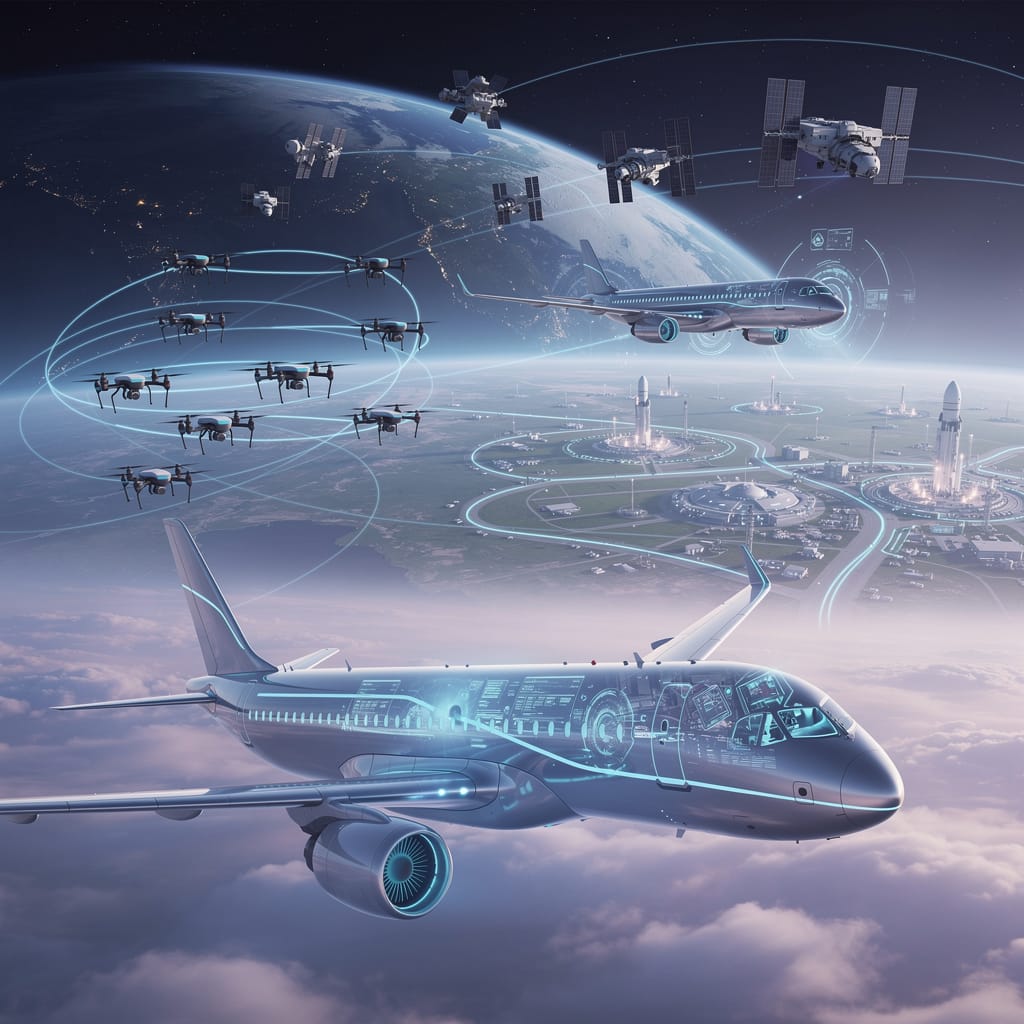Revolutionizing Agriculture with AI
Revolutionizing Agriculture with AI – How Technology is Changing Farming
The agricultural industry is one of the oldest and most important industries in the world, and with the help of new technologies like artificial intelligence (AI), we are seeing exciting new ways to transform and improve the way we grow and produce food.
One of the ways AI is being used in agriculture is through precision farming. By using sensors and machine learning algorithms, farmers can gather real-time data on soil conditions, weather patterns, and plant growth, allowing them to make more informed decisions about crop management and resource allocation. This helps to increase crop yields, reduce waste, and promote more sustainable farming practices.
Another way AI is being used in agriculture is through autonomous farming equipment. By using AI-powered robots and drones, farmers can automate repetitive tasks like planting, harvesting, and crop monitoring, freeing up valuable time and resources for other activities. This also helps to reduce labor costs and promote more efficient use of resources.
AI is also being used to improve crop genetics and plant breeding. By using AI-powered analytics and genetic mapping, researchers can identify and develop new plant varieties that are more resilient to environmental stressors, more nutritious, and more sustainable. This can help to improve food security and promote more sustainable farming practices around the world.
Additionally, AI is being used to improve supply chain management and reduce food waste. By using AI-powered analytics and supply chain tracking, farmers can more effectively manage the production and distribution of their crops, reducing waste and ensuring that crops are delivered to consumers in a timely and efficient manner.
AI is transforming the way we approach agriculture and food production, providing new opportunities for growth and innovation in this critical industry. By leveraging AI-powered technologies, we can improve efficiency, accuracy, and sustainability in every aspect of farming, from crop management and genetics to supply chain management and distribution. As AI continues to develop and evolve, it is likely that we will see even more exciting uses of this technology in agriculture and beyond.
Table summarizing the ways AI is transforming the agricultural industry
| AI Application | Description |
| Precision Farming | Uses sensors and machine learning algorithms to gather real-time data on soil conditions, weather patterns, and plant growth, allowing farmers to make more informed decisions about crop management and resource allocation. |
| Autonomous Farming Equipment | Uses AI-powered robots and drones to automate repetitive tasks like planting, harvesting, and crop monitoring, reducing labor costs and promoting more efficient use of resources. |
| Crop Genetics and Plant Breeding | Uses AI-powered analytics and genetic mapping to identify and develop new plant varieties that are more resilient to environmental stressors, more nutritious, and more sustainable. |
| Supply Chain Management | Uses AI-powered analytics and supply chain tracking to more effectively manage the production and distribution of crops, reducing waste and ensuring timely and efficient delivery to consumers. |
These AI-powered technologies are transforming the agricultural industry, providing new opportunities for growth and innovation in this critical industry. By leveraging AI, we can improve efficiency, accuracy, and sustainability in every aspect of farming, from crop management and genetics to supply chain management and distribution.
Examples of how AI is being used in the agricultural industry
Here are some examples of how AI is being used in the agricultural industry:
- Blue River Technology: Blue River Technology uses computer vision and machine learning algorithms to identify and remove weeds from crops without harming the crops themselves. This helps to reduce the use of herbicides and promote more sustainable farming practices.
- John Deere: John Deere has developed autonomous tractors and other farming equipment that can be controlled remotely or operate on their own, reducing the need for human labor and promoting more efficient use of resources.
- The Climate Corporation: The Climate Corporation uses AI-powered analytics and weather tracking to provide farmers with insights into planting and harvesting schedules, soil health, and pest management. This helps to improve crop yields and reduce waste.
- Benson Hill: Benson Hill uses AI-powered analytics and plant genetics to develop new plant varieties that are more sustainable and nutritious. Their technology allows for faster and more precise breeding, helping to promote more sustainable and resilient food systems.
- Prospera Technologies: Prospera uses computer vision and machine learning algorithms to analyze plant health and growth patterns, allowing farmers to make more informed decisions about crop management and resource allocation.
- CropX: CropX uses sensors and machine learning algorithms to gather real-time data on soil moisture levels and other factors that impact crop growth, allowing farmers to more effectively manage their irrigation systems and promote better crop health.
- AgShift: AgShift uses computer vision and machine learning algorithms to analyze the quality of produce and other food products, allowing farmers to more accurately determine the value of their crops and reduce waste.
- Taranis: Taranis uses drones and AI-powered analytics to monitor crop health and identify potential issues like pests or disease, allowing farmers to take action before serious damage is done to their crops.
These examples demonstrate the potential for AI to revolutionize the way we approach agriculture and food production. With the help of AI-powered technologies, we can improve efficiency, accuracy, and sustainability in every aspect of farming, from crop management and genetics to supply chain management and distribution.
Table summarizing the examples of AI in agriculture
| Company | AI Application | Field of Application |
| Blue River Technology | Computer Vision and Machine Learning | Weed Detection and Removal |
| John Deere | Autonomous Farming Equipment | Farming Equipment Automation |
| The Climate Corporation | AI-powered Analytics and Weather Tracking | Crop Management and Yield Optimization |
| Benson Hill | AI-powered Analytics and Plant Genetics | Plant Breeding and Genetic Improvement |
| Prospera Technologies | Computer Vision and Machine Learning | Plant Health and Growth Monitoring |
| CropX | Sensors and Machine Learning | Soil Moisture and Irrigation Management |
| AgShift | Computer Vision and Machine Learning | Food Quality Analysis |
| Taranis | Drones and AI-powered Analytics | Crop Health Monitoring |
These companies and applications represent just a few examples of how AI is transforming the agricultural industry, providing new opportunities for growth and innovation in this critical industry. By leveraging AI-powered technologies, we can improve efficiency, accuracy, and sustainability in every aspect of farming, from crop management and genetics to supply chain management and distribution.
The most effective AI techniques used in agriculture
There are several effective AI techniques used in agriculture, each with its own strengths and applications depending on the specific use case. Some of the most commonly used AI techniques in agriculture include:
- Machine Learning: Machine learning algorithms can be used to analyze large amounts of data related to soil conditions, weather patterns, plant growth, and other factors, allowing farmers to make more informed decisions about crop management and resource allocation.
- Computer Vision: Computer vision algorithms can be used to analyze images of crops and other agricultural products, identifying patterns and anomalies that can indicate issues like pest infestations, disease outbreaks, or soil nutrient deficiencies.
- Natural Language Processing: Natural language processing algorithms can be used to analyze agricultural research and other sources of data, identifying trends and patterns that can inform crop management and other farming practices.
- Robotics: Robotics and automation technologies can be used to perform repetitive tasks like planting, harvesting, and crop monitoring, reducing labor costs and improving efficiency.
The most effective AI technique in agriculture will depend on the specific use case and the needs of the individual farmer or agricultural organization. By leveraging a combination of these and other AI techniques, farmers can improve efficiency, accuracy, and sustainability in every aspect of farming, from crop management and genetics to supply chain management and distribution.

Text with help of openAI’s ChatGPT Laguage Models & Fleeky – Images with help of Picsart & MIB
Thank you for questions, shares and comments!
Share your thoughts or questions in the comments below!





